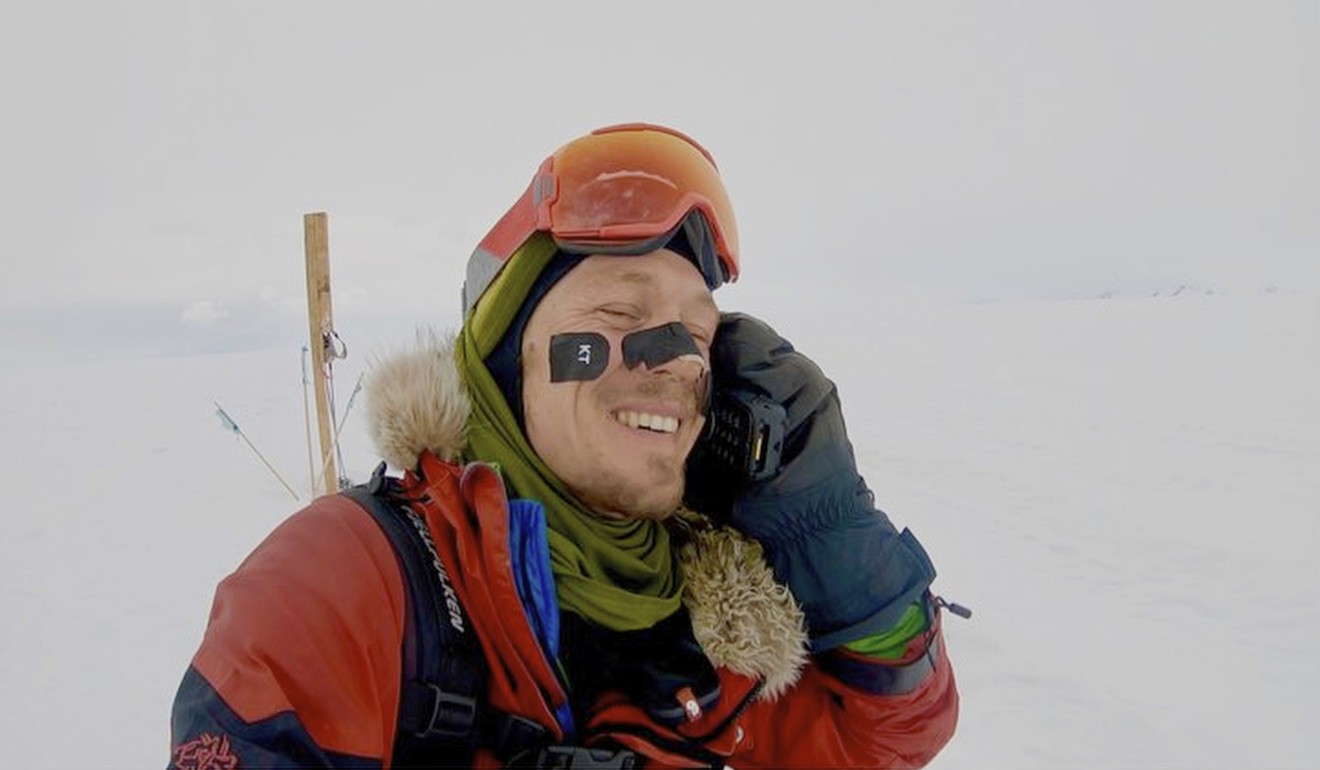
Colin O’Brady’s solo crossing of Antarctic is first unsupported, Borge Ousland’s is first solo unassisted – but they aren’t the same
- A New York Times opinion piece harks back to Ousland’s 1997 crossing as the first, but it misses a distinction between unsupported and unassisted
American Colin O’Brady became the first person to cross the Antarctic unsupported and solo when he reached the coast by Leverett Glacier on December 26. After a number of previous attempts by – and deaths of – other adventurers, the feat was like buses, and two came along at once when Briton Louis Rudd completed the same task two days later.
In his article, Roberts pointed to Norwegian Borge Ousland, who crossed the Antarctic solo between 1996 and 1997.
Ousland received no outside help as he made the journey from Ronne Ice Shelf to McMurdo Sound on the Ross Ice Shelf.

According to Roberts, Ousland “occasionally unfurled a ‘ski sail’ of his own devising: in his words, ‘a simple piece of square fabric’ that would catch the wind and help propel him as he skied across the snow”.
But, this misunderstands a distinction in the polar adventure rule book. According to websites “Adventure Stat: rules and definitions” and “The Next Challenge: the language of polar expeditions”, an unassisted crossing means no outside help, such as resupplies by plane, and an unsupported crossing means no external power, such as dogs, motors or, in this case, wind.
The rules have been consistently applied to all adventurers dedicated to ticking off firsts in the polar regions. If Ousland’s fabric was as small as implied, then it is a pity he bothered to put it up. But as soon as he did, it became supported. It is not an arbitrary definition, but an important one.
This is not to diminish Ousland’s achievement, who is indeed the first solo unassisted expedition. In fact, Ousland’s crossing is more impressive, in my opinion, and he is one of my heroes.
He travelled almost 1,600 kilometres further than O’Brady and was pulling more weight. He made it from coast to coast, where O’Brady was in land by the edge of the ice sheets. Ousland’s feat was incredible, but different under the technical distinction to O’Brady’s, so the latter can claim a first.
Ousland told Roberts via email: “It should not be necessary for me to have to stand up and fight for my ‘honour’. I believe that I should be credited as the first to have crossed Antarctica solo and unsupported from coast to coast. Period.”
If only he had not hoisted his small sail. The rules are the rules and it would be very unfair on O’Brady to decide to draw a line between Ousland’s sail and other sails after the expedition had finished.
Before O’Brady, Rudd or even Henry Worsley – who died attempting the crossing in 2016 – set off, no one said it would not count as a first. It is not media hyperbole, it is the polar definitions they were all playing by.
The New York Times piece points out O’Brady finished his expedition on the South Pole Overland Traverse track, a flattened trail built to resupply the polar station.
I admit, I can see Roberts’ argument and on these grounds you could say O’Brady had assistance, but I still do not agree.

Roberts also praised Ousland because he used a compass and the sun to navigate, and was not equipped with modern day technology. Although life in polar regions is undoubtedly made easier with modern equipment, it is pretty unfair on O’Brady to praise Ousland because he did not use technology that did not exist. I’m sure Ousland would have used whatever was at his disposal had he had the option.
Roberts even pointed out that Worsley was able to die “not on the ice but in a hospital in Punta Arenas”, after he activated his Emergency Position Indicating Radio Beacon (EPIRB) in the Antarctic, as though we are supposed to draw conclusions about just how small and tame polar travel has become now you can just fly to South America to die.
Roberts compared the phones, safety beacons and social media posts of today to Ousland’s complete isolation in the 1990s.
While that sort of isolation presents its own challenges, who is to say if they are worse than knowing you can end the pain with the flick of a switch?
Ranulph Fiennes, the first person overland to both poles, has jokingly said he spent his polar expeditions staring at his partner, hoping the other breaks his leg so he has an excuse to end the trip and not take the blame. Even the best are looking for excuses to go back to comfort, and it takes a different kind of fortitude to avoid the button that takes you there.
In fact, I think it is irresponsible for Roberts to suggest taking an EPIRB constitutes assistance just because it was not available in the past. Should future explorers forgo this safety net to meet the standard Roberts harks back to? That would be reckless and is an unreasonable choice to force upon polar adventurers – unassisted or EPIRB?
In short, Ousland’s crossing was the first unassisted solo crossing of the Antarctic but not the first unsupported. His crossing was magnificent, but O’Brady did not use wind, no matter how small the sail, and deserves the plaudits for being the first unsupported.

